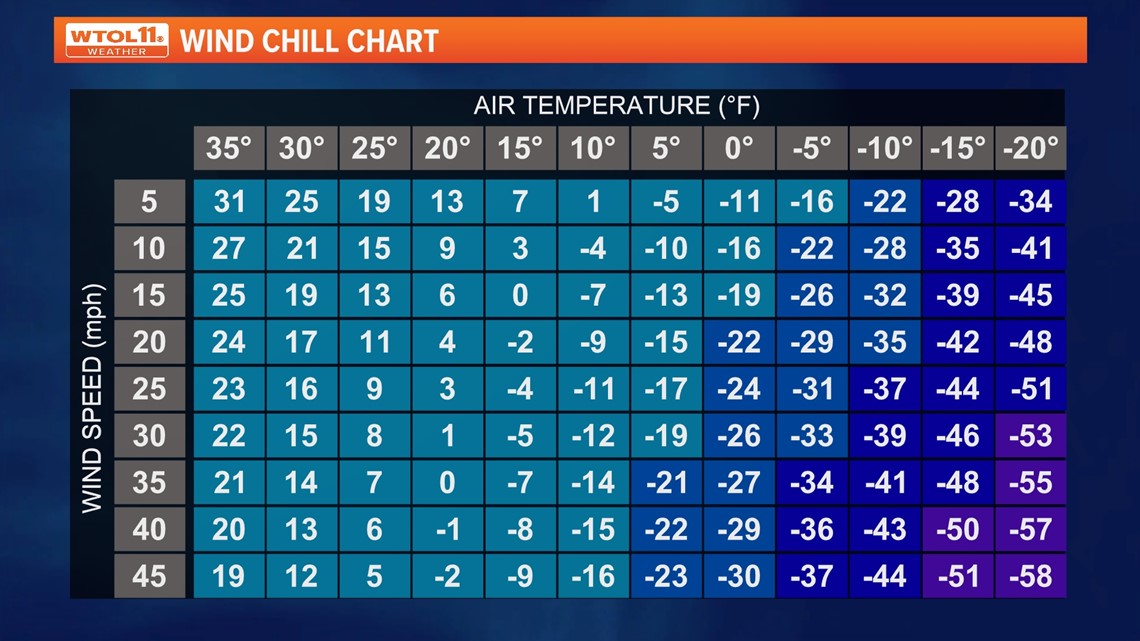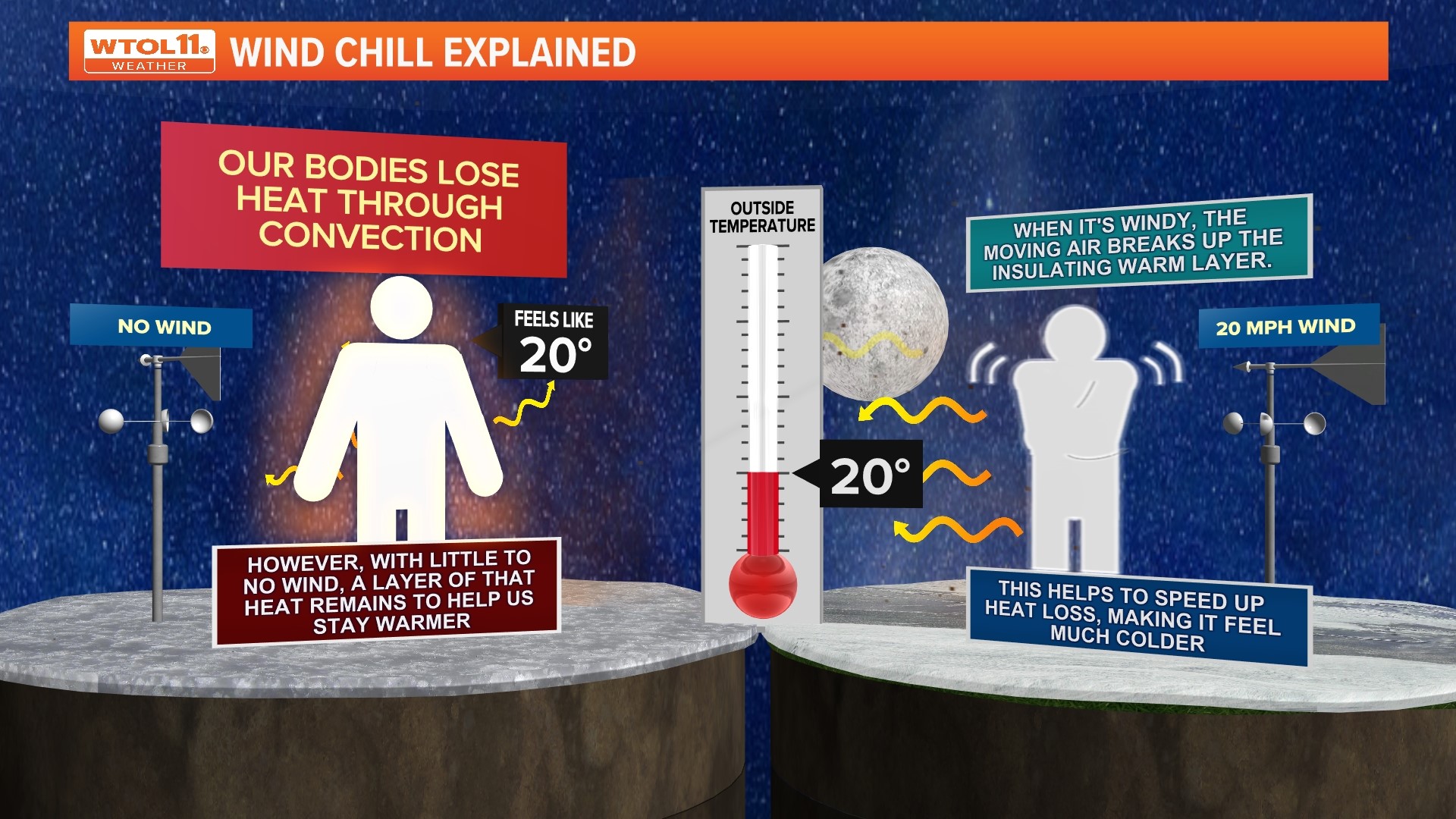TOLEDO, Ohio — The last time northwest Ohio and southeast Michigan experienced sub-zero temperatures, it was 2022. As the area continues to experience temperatures in the single digits, bitterly cold conditions become unbearably frigid when wind is brought into the mix.
Wind chill is defined as how cold the air feels on your skin when factoring in the wind for any temperature at or below 50 degrees with wind speeds above 3 mph. The variable is sometimes referred to as a "feels-like" temperature, which is what it is called in the WTOL 11 Weather app.
Wind chill makes us more susceptible to health and safety risks because of an aspect of human physiology. As mammals, who produce their own body heat, a thin layer of warm air exists just above your skin. Since bodies lose heat through convection - that is, heat rises away from the body while colder air sinks - the layer of hot air around our body actually helps us feel warmer, so long as nothing disturbs it.


The thin layer of heat around your body is also why you may notice you feel warmer when wearing loose clothing as opposed to tight clothing. This is because your body can better heat the air in between your skin and your clothing if there is ample air to warm.
When your skin is exposed, wind will strip the layer of warmth away. As wind speeds increase, the amount of heat lost from your body also increases. Therefore, the stronger the winds, the colder the air will feel to a person. Light winds 3 mph or lower do not contribute to wind chill because they are not strong enough to push heat away from your body.


Since wind removes your body heat, it doesn't only make you feel colder, it also puts you at faster risk for developing frostbite and/or hypothermia.
The following chart is how meteorologists calculate wind chill based on air temperature and current wind speed. To use it, identify the air temperature and wind speed on the upper and left sides of the chart respectively, then follow them to the middle, where they meet.
For example, if it is 15 degrees and the wind speed is 20 mph, the wind chill is -2 degrees.


MORE FROM WTOL 11

